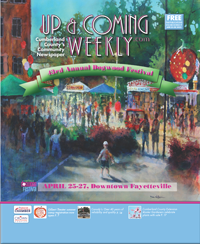
I know I am going where others fear to tread, and, believe me, I do so with great trepidation.
But here I go anyway, diving headfirst into the roiling waters of defining marriage, what it is and what it is not. This turns out to be a more complicated topic than any of us might have thought, one
that has interested people throughout recorded history and an institution that has evolved over time.
The latest fervor of interest erupted surrounding the US Supreme Court’s ruling earlier this year that the legal protections and benefits of marriage cannot Constitutionally be withheld from same-gender couples.
Several years ago, I read Stanford scholar Marilyn Yalom’s excellent and readable look at marriage in the Western world primarily from a woman’s point of view, A History of the Wife. She also wrote the equally compelling History of the Breast, but that is another column entirely.
On marriage, Yalom rightly notes that for most of human history, marriages were made for reasons other than romantic love. From the very earliest unions centuries ago, marriage conveyed property and power, executed mergers of familial interests, provided heirs to carry on family names and resources, and guaranteed homemaking and other services to men. They were business deals, not sacred unions. Religion entered the marriage arena somewhat later.
Yalom’s book jacket asks these questions.
“How did marriage considered a religious duty in medieval Europe become a venue for personal fulfillment in contemporary America? How did the notion of romantic love, a novelty in the Middle Ages, become a prerequisite for marriage today? And, if the original purpose of marriage was procreation, what exactly is the purpose of marriage for women today?”
What indeed?
Study after study tell us that men benefit more in marriage than do women, that men are happier in marriage than women, and that women—and increasingly in our country older women—seek divorce more often than men. What does all that tell us about marriage in our culture?
It tells me that each marriage is different and that none of us know what is going on in anyone’s marriage but our own. It also tells me that the institution of marriage continues to evolve. My grandmothers’ marriages were different than my own, and I expect my children to have marriages encompassing different roles and responsibilities as well. Marriages involving multiple wives are not unusual in many cultures and were once legal in our own, courtesy of America’s homegrown religious denomination, the Church of Jesus Christ of Latter-day Saints, in which the practice still exists, albeit underground these days. My grandmothers probably never heard of a woman who did not take her husband’s family’s surname, while my children’s generation views that as a choice for women, not an obligation.
Yalom largely skirts same-gender marriage issues, which were not as publicly pressing when her book was published in 2001 as they seem in 2015. Many others have weighed in, though, including our nation’s highest court. Many of those who have point out that while different religious traditions have their own takes on what marriage should be, it is also a secular legal institution which must treat all individuals equally. In other words, legal marriage’s protections and benefits are available to all adults who seek them regardless of skin color, religious beliefs, national or ethnic origin, or gender. Kentucky county clerk Kim Davis, herself a veteran of four marriages, recently thought her beliefs outweighed the law of the land as defined by they US Supreme Court, and we all saw what happened to her.
Whatever one’s beliefs and experiences with marriage may be, marriage has always been and remains a deeply and profound personal experience. Each union is unique, and the experiences of the two people within a marriage are, for better or worse, theirs alone. Almost everyone who has ever been in a marriage reports that some days, some weeks, some years are better than others and that over time marriage soars to great highs and falls to sad and painful lows.
And still, the institution endures for all sorts of reasons, and
human beings marry each other every day in our country and throughout the world.
Romantic love is clearly a large factor, but so are the desire for companionship, the need for physical and financial stability, the yearning for children, religious and cultural protection, and reasons private and known only to those entering marriage. Marriage is a uniquely human creation designed to give structure to our desires and stability to our common life together. However flawed as the institution may be, it endures because we want to bind ourselves to each other.

 How to resolve AdBlock issue?
How to resolve AdBlock issue? 









